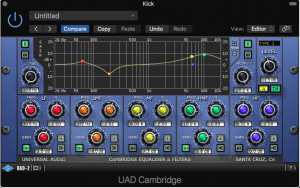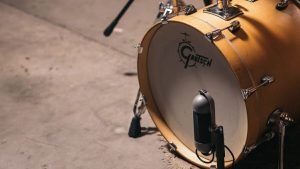When I was at university, I remember coming across a quote by a famous producer saying something like, ‘nobody goes home singing the kick drum’.
Personally, I feel this idea is misplaced. Every aspect of the mix (how the instruments sit together, the power and presence of the low end, how the drums sound) can have a huge impact on the overall production and the emotional experience for the listener.
However, I had to concede his point to a certain extent. In a recording, the vocals are king.
This begs certain questions: Firstly, how do we get a great-sounding vocal performance to start with? And then how do we make sure our vocal sound is killer in our mixes?
This article will cover all that and then some.
It starts at the recording phase
The onus is on us, the recording engineers, to make sure we get the very best we can out of our main vocalist. This starts from the very first moment we press the record button. If the singer is nervous or feels uncomfortable then it is our job to mitigate this as much as possible.
Over the years I’ve found a few techniques that seem to work well. The first, and most obvious, is not recording straight away. Give the vocalist time to settle into their environment and go through a few takes of their main melody. This typically warms up their voice so the performance is immediately improved. A few comments such as ‘that sounds great’ can go a long way in improving their confidence within the studio environment.
The best way to record vocals is completely dry: i.e. no effects whatsoever. This allows us to hear the performance in its most honest state, and critique it if necessary. However, if you are working with a particularly nervous singer then adding a little reverb or delay to the headphone mix can go a long way. The result can be a more confident vocalist for you to record.
Vocal comping
Once we’ve done everything we can to get the best out of the singer, the next most effective technique is vocal comping (short for compiling). This technique involves recording the main vocals 3 or 4 times on different channels. Then the recording engineer and the singer agree on the best-performed parts of each take and edit them together. This produces a single, seamless vocal performance that significantly surpasses the quality of any one individual previous take. I’m often amazed at how effective this can be. You can take an average singer and turn them into a pretty darn good one using this trick.
Beyond editing
We are all aware of the pitch correction tools available to us as producers. If vocal comping (compiling several takes together) has resulted in a relatively good vocal performance, then simply adding real-time vocal pitch correction, such as Waves Tune Real-Time, can give you everything you need to get a killer vocal performance.
However, if you have been working with a substandard vocalist, and even the vocal comping still leaves you with significant pitch problems, manual editing is the only way forward. Use Melodyne or Waves Tune or the built-in logic flex pitch and edit the pants off it.
In the mix
There really are no rules when it comes to mixing vocals—it completely depends on the style and genre of the music at hand. However, in Pop, Rock, Metal, Soul, R&B, or frankly any other form of modern music (outside of Jazz and Classical), there are some common mixing techniques that are used.
Vocal compression
I believe the best way to approach vocal compression is by using parallel compression.
The basic formula for parallel compression is this: take your final vocal track and make a double of it in your DAW. Then use different types of compression on each channel. For example, keep one channel sounding quite natural, with a little compression to smooth out the dynamics of the performance. Then on the other vocal channel use compression to significantly even out the dynamics and/or to create a more upfront, aggressive vocal sound.
Not only can it give you the ‘best of both worlds’ in the sense that you can blend different flavored vocal sounds together, but it also allows you to blend them to taste, based on the particular mix you are working on at the time.
Using this technique in context
If you are mixing a Heavy-Rock track you will likely want an aggressive and upfront vocal sound. Using parallel compression, you can create a vocal channel with a heavily-compressed and distorted vocal sound and then blend in a more natural sound underneath. This vocal blend might be exactly what’s required in that type of mix: the heavily-compressed channel carries an aggressive, ‘in your face’ sound, but has just enough of a natural sound layered underneath to keep it from sounding ‘overcooked’.
On the flip side, you may be working with a soulful song that primarily uses the more natural-sounding vocal channel and only needs a touch of that upfront, heavily-compressed tone to give the vocals a little extra spice. Play around with it until you find what fits for the song.



